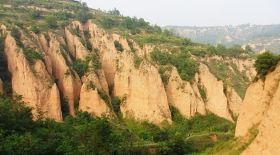Currently, two thirds of the world’s population depends on agriculture sustained by rains of the East Asian summer monsoon, and future climate change in this region can therefore have a major impact on global food production.
Huge areas of central China is covered by a plateau consisting of a fine grained soil type called loess – a sediment deposited here by winds during the Ice Age. The soils formed on loess are very fertile and have been one of the key factors driving cultural development and population growth in China for thousands of years. Additionally, the loess plateau also contains a geological archive that can be used to decipher past climate changes.
Through detailed examination of the loess sediments, a group led by researchers at Uppsala University together with colleagues from Denmark has identified how changes in climatological phenomena such as ice volume and sea level also affected the extent of deserts in China, as well as the behavior of the East Asian summer monsoon.
Continue reading at Uppsala University
Image via Thomas Stevens, Uppsala University


